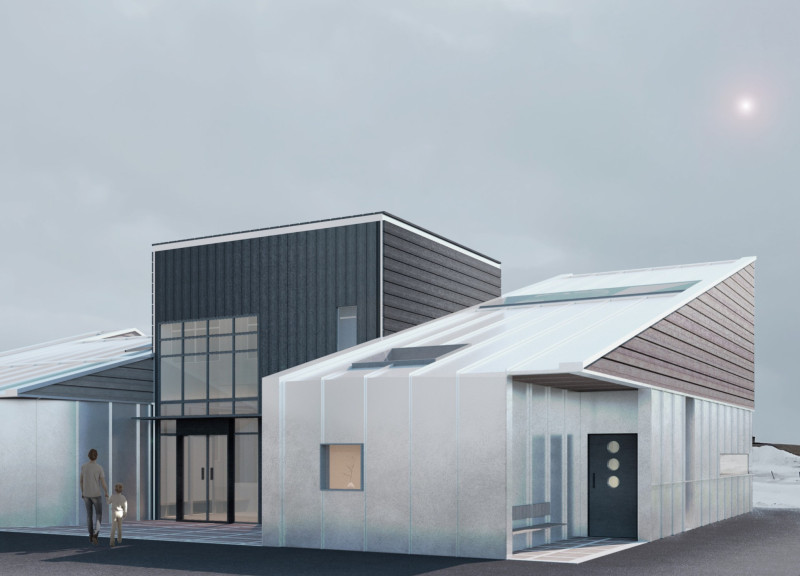5 key facts about this project
At its core, the project embodies a concept that prioritizes open spaces and connectivity. The layout facilitates movement, encouraging interaction among occupants and promoting a community-oriented lifestyle. The architectural strategy employs both horizontal and vertical elements to create a fluid dynamic, which allows for ample light and air circulation throughout. Large windows and strategically placed openings ensure that each room interacts with the environment, drawing in natural light and framing the views of the neighboring landscape or skyline.
The materials selected for this project are integral to its identity and performance. A careful choice of sustainable materials reflects a commitment to environmental responsibility while enhancing the overall aesthetic. The primary materials utilized include locally sourced timber, which adds warmth and texture to the facade; concrete, chosen for its durability and strength; and glass, which not only allows visual transparency but also supports energy efficiency through advanced thermal performance. This combination of materials not only addresses sustainability but also contributes to the building's visual coherence, linking modern design principles with traditional craftsmanship.
In discussing the specific architectural details, the design incorporates features such as overhangs and sunshades to manage solar gain, promoting energy efficiency while enhancing comfort. These elements also serve to articulate the facade, creating depth and visual interest. Furthermore, the project integrates landscaped terraces or green roofs that not only provide recreational space for inhabitants but also contribute to biodiversity and improve thermal insulation.
A unique aspect of this design is its commitment to inclusion and accessibility. Spaces have been thoughtfully designed to accommodate diverse populations, ensuring that everyone from families to individuals with mobility challenges can comfortably use the facilities. The circulation paths are wide and obstacle-free, and thoughtful attention has been given to signage and wayfinding within the project.
Ultimately, the design stands out due to its careful balance between form and function. Each element has been intentionally designed to interact with the others, creating a cohesive environment that encourages community engagement while respecting the individual needs of its users. This project serves as a model for how contemporary architecture can be responsive to both the built environment and its inhabitants.
The careful integration of architectural plans, sections, and design details contributes to a comprehensive understanding of the project’s intentions and outcomes. For those interested in exploring the intricacies of this architectural endeavor, a further examination of the architectural designs and ideas is highly encouraged, as it reveals the layers of thought and creativity invested in bringing this project to life. The interplay of innovative structure, materiality, and functional design elements invites an appreciation of contemporary architecture's capacity to enrich community experiences and create sustainable living environments.


























